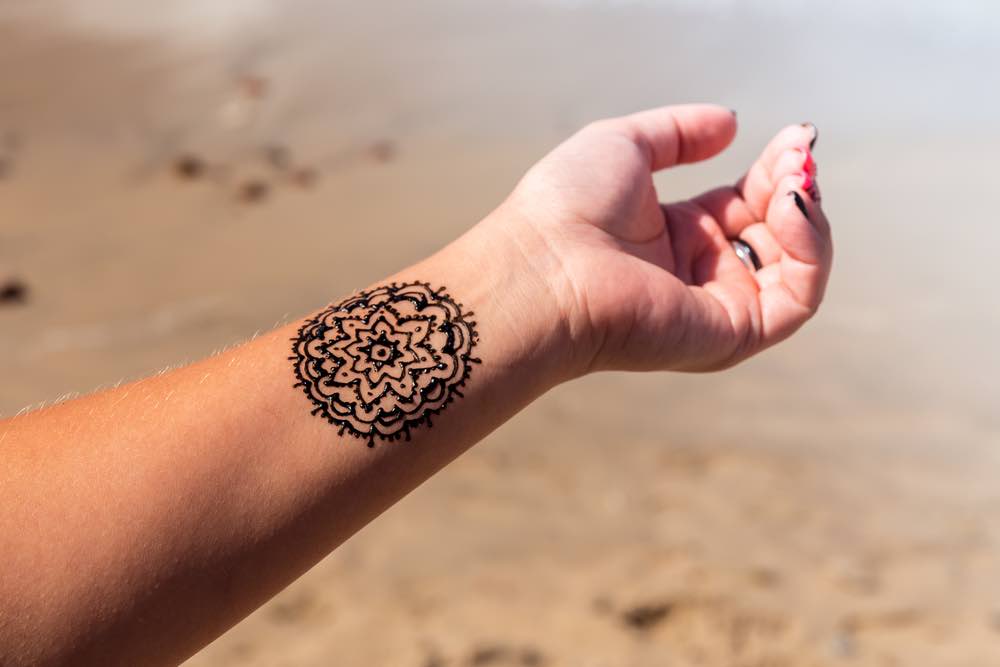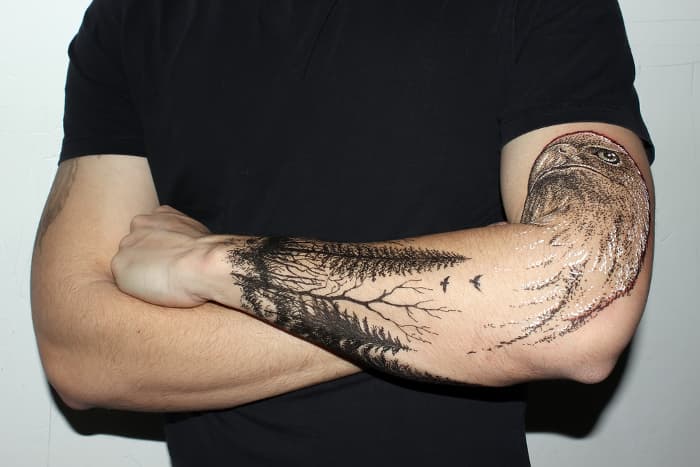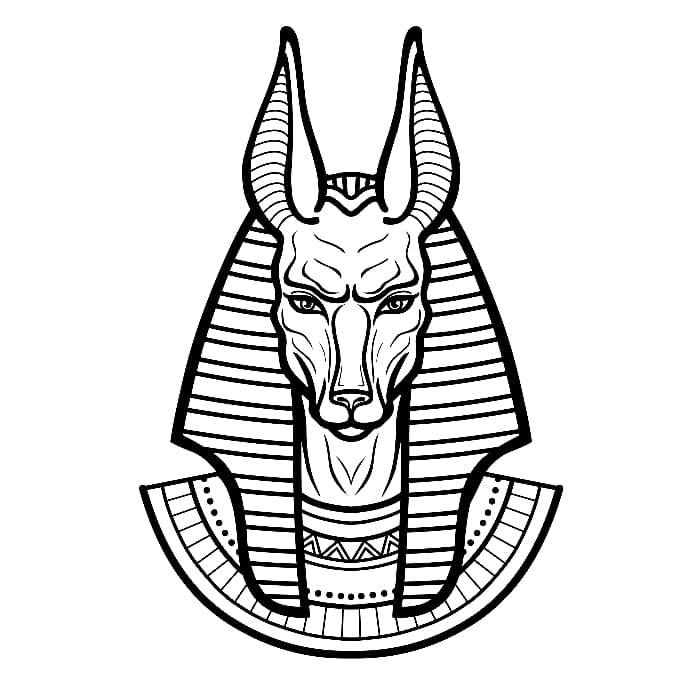The art of tattooing has existed for centuries, and one design that has captured the attention and fascination of many is the mandala tattoo. Derived from the Sanskrit word for “circle,” the mandala, with its unique combination of overlapping circles and shapes, represents balance, eternity, and perfection. Present in many cultures and religions, the mandala symbol transcends time and geographical limits, finding its way into the teachings and practices of multiple spiritual paths.

In the world of tattoos, mandala designs have gained immense popularity due to their intricate patterns, spiritual symbolism, and the possibility of customization, making each piece unique for the wearer. The core of the mandala—circles—symbolizes wholeness and harmony, linking it to the ideas of eternal balance and a deep connection with the universe. As such, mandala tattoos can be considered much more than just decorative pieces, carrying significant meaning for those who choose to wear them.
Key Takeaways
- Mandala tattoos are rooted in spiritual significance, representing balance, eternity, and perfection.
- Their intricate, unique designs make them popular and customizable for various cultural and personal interpretations.
- Alongside its aesthetic appeal, a mandala tattoo serves as a powerful symbol for one’s connection to the universe.
Origins and History
Mandala tattoos have deep roots in Hinduism and Buddhism, drawing inspiration from the spiritual and symbolic aspects of these religions. Originating from the Sanskrit word “mandala” which means “sacred circle,” these intricate geometric patterns were initially used as spiritual guidance tools for meditation and rituals.
Hindu and Buddhist mandalas serve as visual representations of the universe and often incorporate sacred symbols, such as the Om, yin and yang, or the Tree of Life. In Hinduism, mandalas have been used from ancient times to represent the cosmos as well as aspects of the deities. Buddhist mandalas, on the other hand, primarily symbolize the impermanence of the world and are created and destroyed during meditation practices as a demonstration of the fleeting nature of life.
In addition to Hindu and Buddhist cultures, Native American traditions have also embraced the concept of mandalas. Some Native American artworks, such as the intricate sand paintings of the Navajo people, show similarities to mandalas with their use of symmetrical designs and spiritual meanings.
Mandala tattoos not only embrace the historical and cultural significance of the original mandalas but also serve as a reflection of the wearer’s personal beliefs and spiritual journey. When designing a mandala tattoo, people often choose floral patterns, celestial elements, or sacred symbols that hold a personal or spiritual meaning to them.
Design and Symbolism
Mandala tattoos are known for their intricate designs and symbolic meanings. They are often circular or geometric in nature, with a variety of patterns and elements that can be customized to the wearer’s preferences.
Geometric Pattern
The geometric patterns in mandala tattoos are often composed of shapes such as circles, squares, and triangles. They represent interconnectedness and unity, as well as the concept of wholeness and balance. The circle, which is a dominant feature in mandala designs, signifies the universe and life’s continuous cycle. Some mandala tattoos also incorporate elements like the sun and moon, symbolizing the dual nature of existence and the cosmic balance of power.
Floral Elements
In addition to geometric patterns, mandala tattoos often feature floral elements, representing the beauty and power of nature. The lotus flower is a popular choice, symbolizing spiritual growth, purity, and transformation. The lotus mandala, with its 1,000 petals, is known for its complex and intricate design, holding great significance in many religions. Other flower types, like sunflowers and roses, may also be incorporated to add additional color, depth, and symbolism to the design.
Native American Influence
Mandala tattoos often draw inspiration from various cultures and belief systems, including Native American traditions. The Native American wheel, for example, represents unity and the interconnectedness of life’s elements, such as earth, water, and sky. Native American mandala designs may also feature animal symbols, such as an eagle or a bear, to represent the spiritual connection between humans and nature, as well as awareness and wisdom.
Meanings and Symbolic Significance
Spirituality and Meditation
Mandala tattoos are deeply rooted in spirituality, primarily associated with Hinduism and Buddhism. These intricate designs are often used as a tool for meditation, helping individuals to focus and achieve a state of inner peace and tranquility. The mandala’s circular shape symbolizes the cycle of life, death, and rebirth, reminding us of our interconnectedness to the infinite universe. The Sanskrit word ‘mandala’ itself translates to ‘circle’ or ‘completion’, further emphasizing this symbolism.
Growth and Transformation
The process of creating or wearing a mandala tattoo can signify personal growth and transformation. Each mandala has a unique and intricate geometric pattern, representing the complexity of life’s journey. The process of drawing a mandala involves moving through layers and intricate details, symbolizing the unfolding and growth of one’s own path in life. Additionally, mandalas are often seen as sacred symbols – used in various ceremonies and rituals to aid individuals in their personal journey towards enlightenment or wisdom.
Balance and Harmony
Mandalas are innately imbued with a sense of balance and harmony, which is evident in their symmetric, geometric design. This aspect of mandalas reflects our innate desire for stability and order in life. The mandala’s radial design represents the natural balance found in nature, such as the changing of seasons and the cyclical nature of the moon. When worn as body art, mandala tattoos can serve as a reminder of the importance of maintaining balance and harmony in one’s life, both mentally and emotionally.
Purity and Enlightenment
Mandala tattoos also symbolize purity and enlightenment. The lotus flower, often found at the center of a mandala, represents purity, beauty, and spiritual growth. In Hinduism and Buddhism, the lotus is a powerful symbol, as the flower’s journey of growth through muddy waters symbolizes the soul’s journey towards enlightenment. The mandala’s intricate design serves as a visual representation of the universe’s interconnectedness – a reminder that we are all part of a greater whole, striving for awareness, change, and ultimately, spiritual enlightenment.
Tattoo Placements and Styles
Mandala tattoos are popular for their intricate designs, symmetry, and spiritual significance. They often resemble complex floral patterns and are typically contained within a circular shape. In this section, we’ll discuss various placement options for both men and women, as well as the popularity of sleeve and thigh tattoos in mandala design.
Placement for Men and Women
Men: For men, popular placement options for mandala tattoos include the chest, back, and arms. Chest and back placement can offer a large space for detailed designs, while a mandala tattoo on the arm could be the central piece of a sleeve, incorporating the detailed design and symmetry that mandalas are known for.
Women: Women have many placement options for mandala tattoos. A popular choice is on the back or shoulder, allowing for a striking balance between a large design and the natural curves of the body. Hand tattoos and thigh placements are also common, offering a unique and eye-catching approach to the spiritual symbol. Finally, many women opt for smaller and more discreet mandala designs on areas such as the wrist, ankle, or behind the ear.
Sleeve and Thigh Tattoos
Sleeve Tattoos: Mandala sleeve tattoos combine the spiritual symbolism with a focus on the natural shape of the arm. The rounded structure of a mandala works well as a sleeve cap or as part of a larger sleeve tattoo, often with additional detailing and images such as various animals or a tree representing personal transformation and growth. Tattoo artists are adept at creating mandala sleeve tattoos that appear seamless and flow naturally with the body’s contours.
Thigh Tattoos: Thigh mandala tattoos offer a similar opportunity to showcase the balance between intricate design and a more concealed placement. With ample space for detailing, these tattoos can incorporate various elements, like a deity or a butterfly symbolizing transformation, and can even be extended into a larger design that covers the entire thigh. The blend of symmetry and meditation-like order makes a thigh placement a captivating option for those seeking a unique and personal mandala tattoo experience.
Cultural Variations and Adaptations
Hindu and Buddhist Mandalas
Mandala tattoos have their roots in Hinduism and Buddhism, where they hold significant symbolic meaning. In these religions, mandalas are intricate geometric patterns that represent the universe, nature, and life. The lotus flower is a common element in Hindu and Buddhist mandalas, symbolizing purity, rebirth, and enlightenment.
In Hinduism, mandalas are often associated with specific deities, and the arrangement of the design can represent the deity’s connection to the surrounding world. In Buddhism, mandalas symbolize the impermanence of life and are commonly used as an aid for meditation, helping practitioners visualize the path to enlightenment. Although the designs and meanings may vary between these two faiths, both Hindu and Buddhist mandalas share a focus on intricacy, symmetry, and symbolic representation.
Native American Mandalas
Mandala symbolism can also be found in Native American culture, where geometric patterns are used to express unity and harmony with nature. Native American mandalas often incorporate elements such as flowers, animals, and celestial bodies like the moon. These designs are rooted in the religion and history of various Native American tribes.
In contrast to Hindu and Buddhist mandalas, which tend to be more intricate and floral, Native American mandalas often feature simpler geometric shapes to represent the interconnectedness of all living beings. However, both styles of mandalas emphasize balance and the idea of unity within the pattern.



